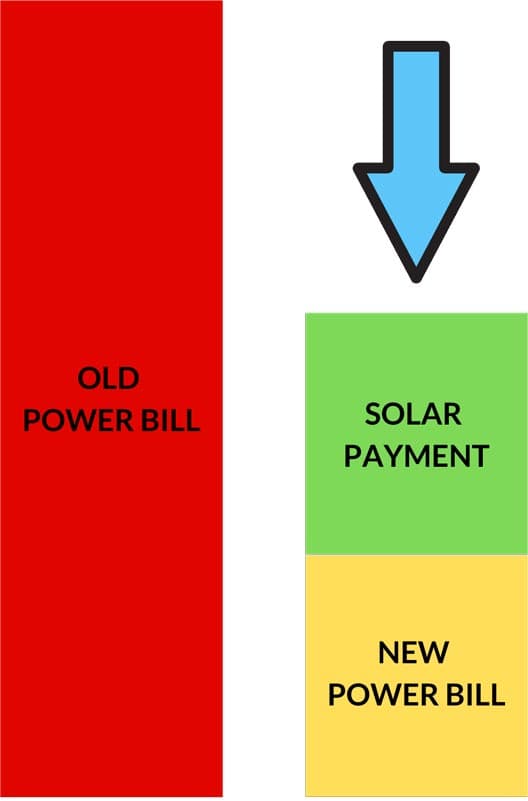How Can Solar Save Me Money?
Solar systems are at a record low price, with an average-sized home solar system (5kW) with good quality panels now costing less than $5,000 fully installed.
5kW systems generate on average around 25 kWh a day (averaged out across the year). Most residential houses are being charged approximately 28c per kWh (unit) from power companies, so if you use all of the solar power as it is generated, you can save over $2000 every year on your power bills!
(0.28c x (25×365)=$2555)
Based on this outline, you may be able to achieve a return on your investment in 2-3 years. Please note, power demands differ per household and these savings are a general guide only.
Obviously, if your bills do not add up to $2000 per year (if you do not use $2000 worth of power), you cannot possibly save that amount.
Let’s Figure out how much you would need to pay for a solar power system to determine if solar power is right for your household


How to Calculate Your Savings
Understanding how your current power bill is calculated is very important.
Your house is filled with appliances that draw electricity to power up – such as fridges, air-cons, ovens, TVs, laptops etc. The electricity that these appliances use is measured in kilowatt-hours (kWh). On your power bill, each kWh is referred to as a unit (Kwh and Units are the same thing). Every unit your household uses from the grid costs approximately 28c so if you use 10 units a day, that will cost $2.80. The more power you use, the more it costs.
When you install solar, your solar system pretty much becomes your own little power grid on your roof, producing its own kWh/units and feeding your house free of charge instead of paying 28c to your power provider.
Your savings a year could be over $2,000 if you used the power your created at 28c per unit. Or, it could be under $1,000 if it all got pumped back into the local grid at 7cents. Most houses will fall somewhere in between, using two thirds of the power they create and exporting the other third back into the grid at 7cents per unit, which goes towards offsetting your night time power.
The only catch: Solar households are paid to send their excess solar back to the grid at a lower rate of about 7c per unit. If it costs 28c to draw a unit from the grid, and you get paid 7c to send one unit back, to offset 1 unit of power at night time, you need to be pumping 4 units back into the grid during the day. It’s not the most ideal use of your system but you will still see a reduction in your bills.
